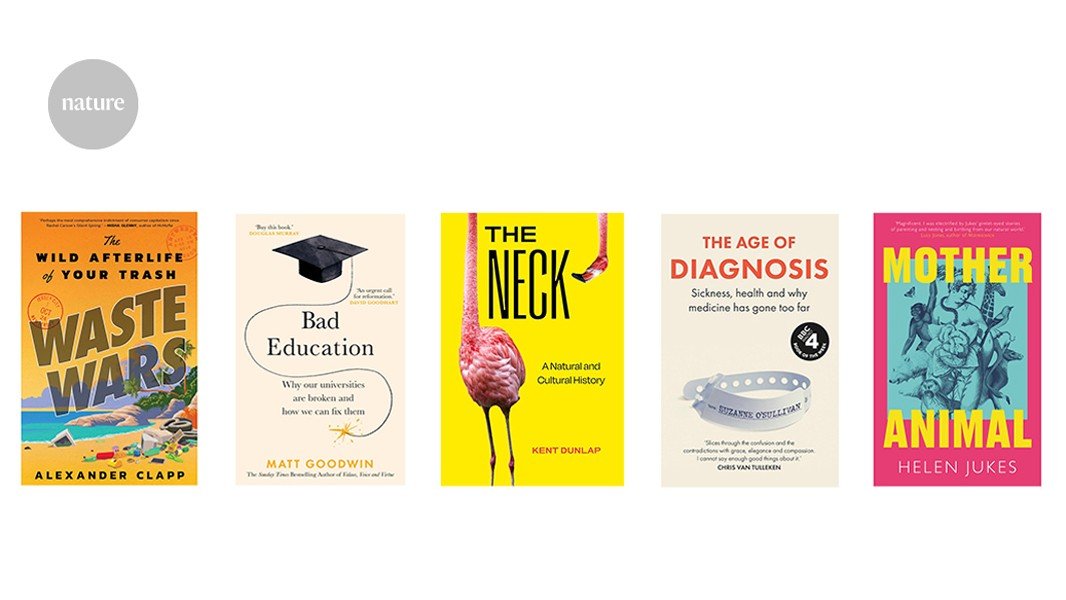Contents
The Rise of Health Diagnostics: Exploring the Future of Genetic Testing and Medical Understanding
New books from thought leaders explore the implications of advanced diagnostic technologies in medicine. These works argue that while technology can enhance health assessments, it also raises concerns about overdiagnosis and its effects on patient well-being.
Lead: In an age where advances in genetic testing and medical diagnostics are rapidly evolving, thought-provoking perspectives emerge from new publications by leading authors. Three notable books—Suzanne O’Sullivan’s “The Age of Diagnosis,” Helen Jukes’s “Mother Animal,” and Kent Dunlap’s “The Neck”—delve into the complex world of health, motherhood across species, and human anatomy, respectively. As the UK health secretary celebrates genetic tests heralding personalized healthcare, experts caution about the implications of such innovations on overall patient welfare.
Insights from “The Age of Diagnosis”
Suzanne O’Sullivan, a prominent neurologist, shares her insights in “The Age of Diagnosis,” a book that scrutinizes the enthusiastic adoption of direct-to-consumer genetic tests. In 2019, the UK health secretary applauded a genetic test revealing a 15% risk of prostate cancer, positioning it as a breakthrough. However, O’Sullivan points out that this statistic is not significant compared to the average lifetime risk of 18% facing men. She argues that what is critical in healthcare is not merely finding patients but rather enhancing the quality of life for those diagnosed.
- Key Arguments: O’Sullivan suggests that new diagnostic criteria should prioritize quality of life over the sheer number of patients diagnosed.
- Criticism of Overdiagnosis: The book argues that the rush towards new technologies often leads to overdiagnosis, which can ultimately detract from meaningful patient care.
- Quote from the Author: “New diagnostic criteria need to be measured more by their ability to make quality of life better — not by how many patients they can find.” — Suzanne O’Sullivan
The Implications of Direct-to-Consumer Testing
With the rise of direct-to-consumer genetic testing, several critical points arise:
- Accessibility: Patients gain immediate access to their genetic information.
- Responsibility: Patients may misinterpret their risks without proper guidance.
- Healthcare Burden: Increased diagnoses can overwhelm healthcare systems without improving health outcomes.
Exploring Motherhood: “Mother Animal”
In “Mother Animal,” author Helen Jukes uses her unique experience of motherhood to examine the birthing processes of various species. Through personal narratives and insights, she highlights how birthing in humans differs dramatically from that of other animals.
- A Unique Perspective: Jukes’ exploration reveals astonishing facts, such as how human labor extends much longer than that of other primates.
- Inspiration and Alarm: While Jukes acknowledges potential concerns in her findings, she also emphasizes the wonders of motherhood across species.
- Quote from the Author: “If there are grounds for alarm in the book, I hope there is also much to inspire wonder.” — Helen Jukes
The Fascinating Mechanics of Labor
Key takeaways about the birthing processes discussed in “Mother Animal”:
- Labor Duration: Human labor is significantly longer than that of many other species, raising questions about evolutionary biology.
- Unique Challenges: The human pelvic structure often poses unique challenges during childbirth.
- Comparative Analysis: Jukes compares labor in polar bears, burying beetles, and other species to provide context for human experiences.
The Multiple Functions of the Neck: “The Neck”
Biologist Kent Dunlap’s “The Neck” offers a captivating discussion about the human neck, describing it as the “ultimate multitasker.” Dunlap uses a combination of scientific exploration and personal fascination to dive into the neck’s multifaceted roles in our daily lives.
- Complex Biology: The neck is a sophisticated structure composed of bones, muscles, nerves, and glands.
- Functionality: It allows us to flex, sense, and transport various elements throughout our lives.
- Artistry and Science: Dunlap incorporates various aspects, from medical illustrations to cultural expressions like Indian dance.
The Neck’s Role in Human Experiences
Insights into the complexities of the neck:
- Ultimate Multitasker: The neck plays an essential role in many daily functions, often unnoticed.
- Neuroscience: Dunlap discusses how neck biomechanics relate to neurobiology and behavior.
- Illustrative Insights: The book opens with a historical medical drawing, emphasizing its intricate anatomy.
Conclusion: As these compelling books highlight the intersection of advanced diagnostics, motherhood, and anatomy, they stimulate a broader conversation on the crucial elements of healthcare, the pressures of modern medicine, and the delicate balance between knowing and living well. The insights of O’Sullivan, Jukes, and Dunlap urge readers to think critically about the implications of medical advancements and the profound connection we share with the biological world around us.
Keywords: genetic testing, health diagnostics, overdiagnosis, motherhood, human anatomy, Suzanne O’Sullivan, Helen Jukes, Kent Dunlap.
Hashtags: #HealthDiagnostics #GeneticTesting #Motherhood #HumanAnatomy #Overdiagnosis #MedicalInsights #LiteratureInHealth
Source link




